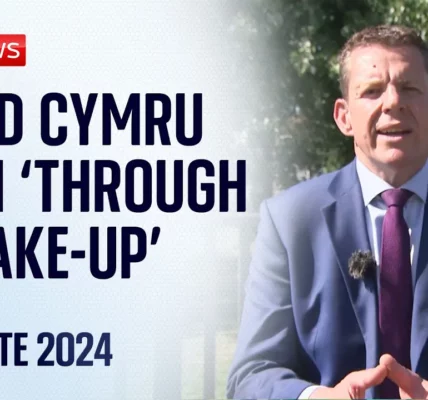Analysis of the Conservative Manifesto: A Critical Review

This article provides a comprehensive examination of the Conservative Party’s manifesto, shedding light on the unfunded policies, projected costs, and their implications for public services and household finances.
Introduction
The Conservative Party’s manifesto has stirred considerable debate, particularly regarding its fiscal commitments and the feasibility of its proposed policies. With a staggering £71 billion in unfunded commitments over the upcoming parliamentary session, questions arise about the sustainability and credibility of these financial pledges. This article delves into the manifesto’s core elements and evaluates the potential impact on the economy and public services.
The £71 Billion Unfunded Policies
The cornerstone of the criticism surrounding the Conservative manifesto lies in the assertion of £71 billion in unfunded policy commitments. This raises significant concerns about the party’s approach to fiscal responsibility and economic management.
Understanding Unfunded Policies
Unfunded policies refer to commitments made without a clear plan for how to finance them. This can lead to increased borrowing, which has direct repercussions on interest rates and, consequently, household expenditures.
Impact on Household Finances
With the potential for increased borrowing, families could face an average increase of £4,800 in mortgage payments. This projection is alarming and underscores the importance of understanding the fiscal implications of political commitments.
- Increased borrowing could lead to higher interest rates.
- Families may struggle with elevated mortgage payments.
- The uncertainty can affect consumer confidence and spending.
Tax Avoidance and Revenue Generation
A significant area of concern is the Conservative Party’s lack of a coherent plan to tackle tax avoidance. The manifesto’s vague references to revenue generation fail to provide a detailed roadmap.
The Importance of a Tax Strategy
Addressing tax avoidance is crucial for generating the revenue necessary to fund public services and commitments. Without a solid plan, the party risks leaving the electorate in the dark about how they intend to balance the budget.
Examples of Proposed Tax Loophole Changes
While there are mentions of closing tax loopholes, critics argue that the proposals lack specificity and feasibility:
- Closing the non-dom tax loophole.
- Implementing VAT on private school fees.
- Adjusting private equity bonuses taxation.
Each of these measures could potentially raise significant funds, but their implementation remains uncertain.
Projected Cuts to Public Services
Another critical issue raised in the analysis of the Conservative manifesto is the projected cuts to public services. These cuts are necessary to achieve the financial targets set forth, yet they remain largely unaddressed in the document.
The Need for Clarity on Spending Plans
Voters deserve transparency regarding how funds will be allocated across various departments. The absence of detailed spending plans raises questions about the Conservative Party’s commitment to public service funding.
Potential Consequences of Cuts
Projected cuts to unprotected departments could lead to:
- Reduced quality of public services.
- Increased strain on already limited resources.
- Negative impacts on community welfare and support services.
Labor’s Response and Alternative Solutions
In contrast, the Labor Party has claimed that their manifesto will provide fully funded and costed policies. They emphasize the importance of sustainable economic growth as a long-term solution to funding public services.
Addressing Economic Growth
Labor’s focus on growth is seen as crucial for achieving sustainable funding. However, the timeline for realizing these benefits remains a point of contention.
Immediate vs. Long-Term Solutions
While growth is a valid goal, critics argue that immediate solutions are necessary to address the pressing issues facing public services today. Without a clear plan for short-term relief, any proposed growth strategy may seem abstract and disconnected from the current fiscal climate.
Conclusion
The Conservative manifesto presents a complex and concerning picture of fiscal responsibility and public service funding. With £71 billion in unfunded commitments and a lack of transparency regarding tax strategy and spending plans, the potential for increased borrowing and higher interest rates could significantly impact households. As the political landscape evolves, it is critical for voters to remain informed and engaged, ensuring that their voices are heard in the shaping of future policies.
If you found this analysis insightful, consider exploring our related articles on fiscal responsibility and public service funding for a deeper understanding of these pressing issues.
“`




